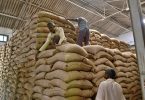[ad_1]
We are likely witnessing the beginning of the largest disruption to global supply chains in the post-World War II era. Between the COVID pandemic, the ongoing U.S.-China trade war, severe weather events, cyber attacks, and now the Russian invasion of Ukraine, policymakers around the world are starting to understand that supply chain disruption is the new normal and beginning to prioritize supply chain security and resilience during what is expected to be a period of long-term international instability.
While it is difficult to predict how long Russia’s war against Ukraine will last, many commentators believe that war may be long and protracted. As long as the conflict lasts, we would expect more sanctions and other measures to be promulgated. This will prompt supply chain realignments, including greater decoupling from the Russian economy. These measures will start as temporary but could become long-term or even permanent.
In addition, China’s de facto alliance with Russia since the start of the war will likely provide additional momentum for de-coupling with China as well, including the development of regional and plurilateral approaches to onshoring/reshoring and “friend-shoring” supply chains. These shifts of alignments will have major consequences for the production and movement of goods, ranging from automobiles, semiconductors, and oil and gas, to food and agricultural commodities. Global companies will increasingly be faced with choosing between abiding by Western sanctions and export controls or Chinese and Russian law.
What’s Happened So Far
The United States and its allies have opted to help combat Russia’s war against Ukraine with a coordinated and unprecedented mixture of weapons and materiel shipments, financial assistance, economic sanctions, investment restrictions, trade policy reforms, and export controls.
- U.S., UK, and EU sanctions have designated almost the entirety of the financial and defense industries in Russia. Russian foreign reserves held in U.S. banks have been frozen, forcing Russia to default on bond repayments. President Biden also issued an Executive Order prohibiting all new investment and the furnishing of any service to any person located in Russia. The definition of “investment” and “service” have yet to be defined, but could be extremely broad.
- Export controls coordinated with dozens of countries around the world have cut off Russia from high-tech equipment that could potentially be used in service of the Russian war effort. As many of these imports are “dual-use” items, meaning they have both civilian and military applications, such export controls will also cripple many Russian civilian industries such as software and aviation. Additionally, President Biden enacted an import ban on Russian oil, vodka, seafood, diamonds, and other “luxury goods.”
- Congress passed and President Biden signed a bill that suspended normal trade relations with Russia. Other jurisdictions, including Canada and the EU, had previously taken similar steps, and several other G-7 countries are also actively considering suspending normal trade relations with Russia. By suspending normal trade relations, the U.S. can impose higher tariffs on Russian-origin goods, which will create incentives for importers of goods from Russia to find other suppliers, if possible.
- The combination of formal restrictions and the political toxicity of being seen to do business in Russia has forced companies to consider the reputational cost of such activity. Companies from across the full spectrum of industry have suspended operations in Russia or sold their assets to Russian counterparts at a steep loss.
- The U.S. government and its allies have consistently stated that they will continue to ratchet up economic pressure on Russia through the use of additional sanctions and export controls if Russia does not cease its war against Ukraine.
- Additionally, the U.S. Treasury Department has expressed a willingness to utilize “secondary sanctions” on non-U.S. persons who engage in transactions with sanctioned entities anywhere in the world. This has the effect of further dissuading international business from conducting operations in Russia.
The Russian government has also started the process of withdrawing from the WTO. All of the above trend lines point in the direction of a sustained decoupling between Western-aligned markets and Russia. The following sections detail some of the current and potential impacts of that decoupling.
Impacts on Food and Agricultural Markets
Ukraine and Russia are major producers and exporters of barley, fertilizer, sunflower oil, and wheat. With their production absent from the global market, prices will increase for those products as well as derivatives. The United Nations World Food Program has already reported that emergency food rations to countries like Yemen, Egypt, and Lebanon have been halved. The African continent is likely to be severely impacted as well. The UN has warned that already high food prices will continue to rise, and a recent G7 statement warned that “Russia’s war of aggression has generated one of the most severe food and energy crises in recent history which now threatens those most vulnerable across the globe.”
It is unclear how to make up the lost volumes, especially as countries consider (e.g., India for wheat) or impose (e.g., Indonesia for palm oil) export restrictions on these and substitute products to ensure sufficient domestic supply and low prices. With respect to grains in particular, finding alternative sources is made additionally challenging by fixed planting and harvesting schedules and increasingly extreme weather patterns. Some alternative sources such as genetically modified wheat products may only be available in certain countries. Shortages of one commodity also have effects in other markets. For instance, if the price of grains is higher, that increases the cost of feed which, in turn, increases prices for meat and dairy products.
For some companies, the lost volumes of exports threatens to undermine investments to ensure sustainable supply chains. Companies that had invested in sustainable palm oil production in Indonesia, for example, now face the challenge of finding alternative sources of supply that can satisfy relevant standards. For some businesses, supply shortages resulting from the conflict combined with price inflation may threaten their viability: for instance, British fish and chip producers are facing severe supply chain disruptions as a result of their heavy reliance on Russian cod and Ukrainian sunflower oil, reportedly leading to price increases in their products of around 21% at a time when consumers are already cost-sensitive due to high inflation.
Impacts on Shipping
The war in Ukraine is adding to the significant disruptions to freight movement and port congestion resulting from the COVID-19 pandemic. According to a recent report by the Royal Bank of Canada, congestion at various major ports has tied up one-fifth of the global container ship fleet, lengthening delays and exacerbating the shortage of shipping containers. Congestion may worsen as supply chains adjust. For example, any U.S. shipments of wheat to Europe that could help make up for some of the shortfall in wheat production will likely to be routed through U.S. East Coast ports, which are not accustomed to such a volume of exports or handling wheat. It is likely we could see increased congestion at East Coast ports as a result, which would disrupt freight flow for other products. Shipping costs are also increasing as insurers raise premiums to cover the risks of the conflict.
The conflict has also worsened the preexisting seafarer labor shortage. Russia and Ukraine account for 14.5% of the global seafarer workforce (10.5% and 4% of seafarers, respectively). Crews have been trapped on ships in Ukrainian ports and the Black Sea, unable to evacuate safely, with 84 merchant ships with close to 500 seafarers reportedly stranded in Ukrainian ports as of April 20. Safety risks in affected areas, as well as travel and payment restrictions, make it harder for vessels to replace crews, adding to delays.
Impacts on Supplies of Energy, Critical Minerals, and Other Materials
Nearly 400,000 companies in the U.S. and Europe depend on suppliers in Russia and Ukraine. While Russia is not nearly as integrated into the global supply chain as China, there still is a significant Western reliance on Russian energy and minerals in particular.
The Biden Administration has been unsuccessful in persuading Saudi Arabia to increase the supply of oil, and has had only limited success in convincing a skeptical U.S. oil and gas industry to increase domestic production in the face of restricted international supply. Of course, tighter supply and resulting higher energy costs negatively impact manufacturing across the supply chain, as well as production of food and agriculture products.
Disruptions to energy markets are evolving quickly and often unpredictably. EU member states hold different views on the extent to which Russian energy imports should be restricted, making the development of a consistent policy response to the energy issues created by the conflict challenging. Russia has demonstrated that it is prepared to restrict exports in response to political pressure, the recent suspension of the supply of electricity by Russia’s largest electric company to Finland being one example. Further restrictions by Western countries and retaliatory restrictions from Russia, and accompanying disruptions to energy markets, are likely.
In addition, Russia is also a major source of numerous minerals that are critical for U.S. industry, including aluminum, nickel, titanium, palladium and scandium. For instance, nickel is a primary component in EV batteries, palladium is a critical input in catalytic converters, and titanium is particularly important for commercial jet engines and other airplane parts (prior to the outset of the conflict, Airbus reportedly relied on Russia for half its titanium requirements, while the Russian company VSMPO-AVISMA provided a third of Boeing’s requirements). The price of all five of these minerals skyrocketed after the invasion of Ukraine. Additionally, Ukraine is a major supplier of neon, which is used to produce semiconductors. Rising energy costs could also cut down on production and mining of these minerals.
Shortages in critical minerals will be particularly disruptive to sectors involved in the transition to low-carbon technologies. With respect to autos, the increasing cost of EV batteries – the most expensive component of EVs – will amplify existing pressure to increase domestic capacity. It may also incentivize investment in improving recycling technologies for batteries. Shortages in critical minerals also threaten to drive up the price of solar and wind technologies and affect investments in new renewable energy projects. By shifting policy attention within the United States to ramping up oil and gas production at a time when the fate of U.S. policy supports for the green energy transition remains uncertain, the war is making it more difficult for U.S. companies seeking to predict and prepare for government efforts to further incentivize the decarbonization of supply chains.
In sum, until industry is able to develop sufficient alternative supplies, which will take time, there will be major disruptions across various industries, including autos, batteries, and semiconductors.
Impacts on Technology Services
In addition to disrupting international supply chains for goods, the war in Ukraine is also impacting services supply chains. Ukraine is a major hub for advanced engineering and IT workers, many of whom have had to flee as a result of the conflict. American companies that have outsourced certain services to providers located in Ukraine, Russia, or Belarus (or service providers in other countries that outsource to providers located in Ukraine, Russia, or Belarus) may need to shift suppliers. Moreover, workers in the engineering and IT industries were already in high demand before the war. Now, companies seeking to increase their talent pool face even more intense competition.
Impacts on Trade and Investment With China
The Russian invasion of Ukraine could also serve as a milestone in the West’s relations with China, with resulting impacts on global supply chains. On April 15, China’s Ministry of Commerce (MOFCOM) publicly warned companies that if they adhere to U.S. and allied sanctions on Russia, China would consider that to be coercive and a potential violation of Chinese law. Companies would face repercussions in China’s market and perhaps even be added to MOFCOM’s Unreliable Entity List (similar to the U.S. Entity List). This announcement makes clear what has been trending for some time, namely that the U.S. and Chinese governments are effectively forcing companies to choose a side. This provides more fuel for de-coupling and resulting supply chain shifts, with many Chinese companies already deciding against investments in the U.S. and many U.S. companies seeking suppliers from outside China. These issues are compounded by China’s decision to double down on a “zero-Covid” strategy. This will mean periodic long-term lockdowns of major population centers for the foreseeable future, which will further disrupt the operation of factories and ports in China.
With the WTO negotiating function essentially paralyzed given theological disagreements among the major players and the U.S. unable to join CPTPP due to domestic political constraints, the Biden Administration has initiated bilateral and regional efforts to reach agreements with key trading partners, with the need to counterbalance China as the unspoken predicate. The two main U.S. initiatives are the Indo-Pacific Economic Framework and the U.S.-E.U. Trade and Technology Council. Most participants in these discussions will be more motivated to find common ground due to Russian actions and China’s implicit support, although India is attempting to maintain a difficult balancing act between Russia and the United States. At the same time, these agreements will be less robust than free trade agreements in terms of market access opportunities, and they are far easier to roll back by a subsequent U.S. administration.
The Administration will likely seek bilateral and regional supply chain-related arrangements as part of these initiatives. If implemented in a coordinated manner with industry input and buy-in – such as through public-private partnerships and consensus standards development – such arrangements could shift supply chains over time. Effective means of incentivizing such shifts could include origin-neutral measures that are justified on health, safety, and/or environmental grounds, such as measures relating to modern slavery, carbon intensity, supply chain due diligence, financial disclosure requirements, and other ESG-type measures.
Conclusion
The war in Ukraine began at a time when the global trading system was particularly unstable and vulnerable, with the U.S.-China trade war still underway and the WTO largely sidelined. The shocks to global trade and supply chains from the Russian invasion of Ukraine have caused leading trade policy practitioners, such as U.S. Trade Representative Katherine Tai, to wonder aloud if we should rethink free trade and the post-World War II “vision for globalization.”
While it is unclear what this new world will look like, it seems clear that considerations of energy, health, and national security, human rights, climate change, supply chain resilience, and freight movement visibility will take center stage and incentivize substantial realignments of global supply chains, with a focus on reshoring and/or friendshoring. Companies will increasingly be required by governments, major market players, and shareholders to attest to meeting ESG and other supply chain-related requirements at each node of their supply chains; where sufficient evidence of compliance is not produced, goods could be denied entry, border measures could be imposed, or service providers could be denied government contracts, to cite a few examples. There is also an element of unpredictability that companies need to assume, as black swan events multiply and governments take steps that may over-correct.
As a result, understanding one’s supply chains from end to end has become both a legal and market imperative, both to identify and mitigate potential costs and risks, as well as to take advantage of potential market opportunities. Shifting or diversifying supply chains could often be part of the solution for companies in order to a
[ad_2]
Source link







